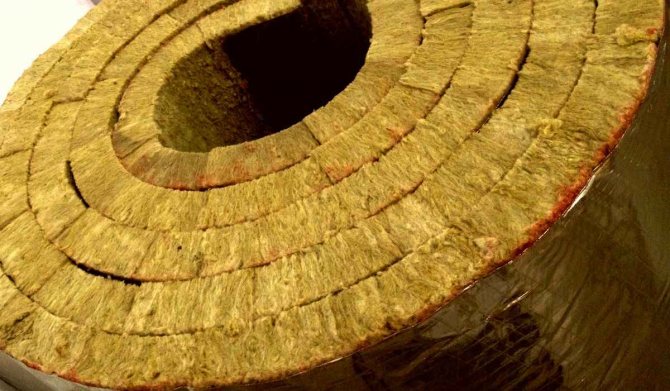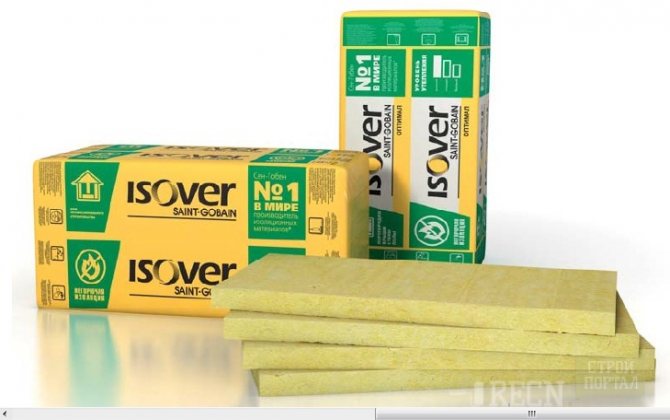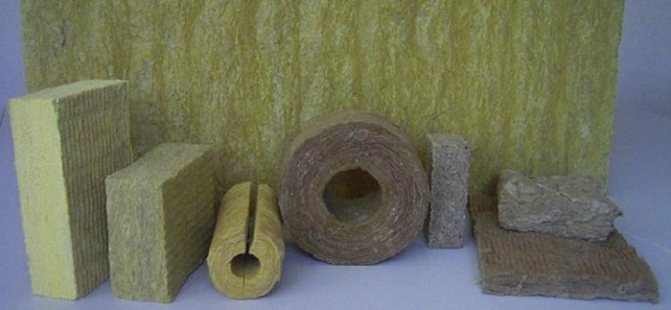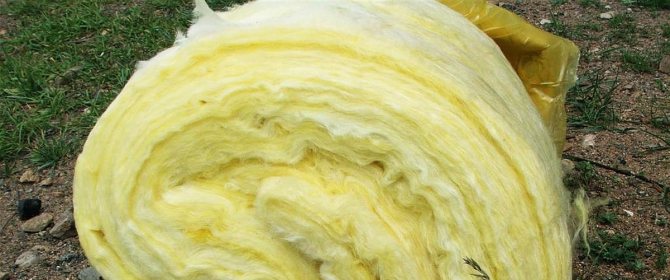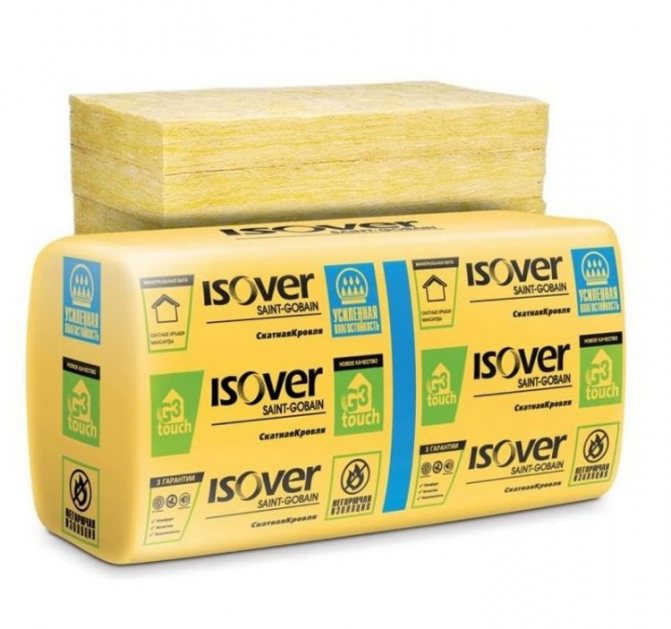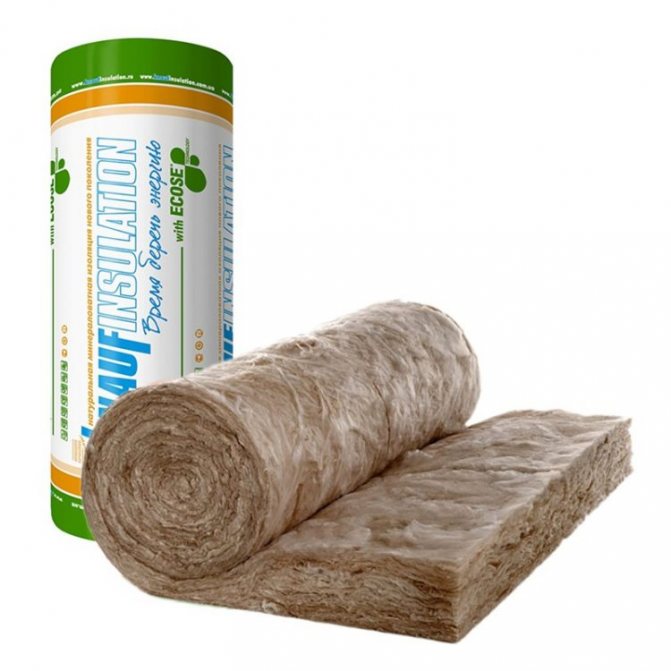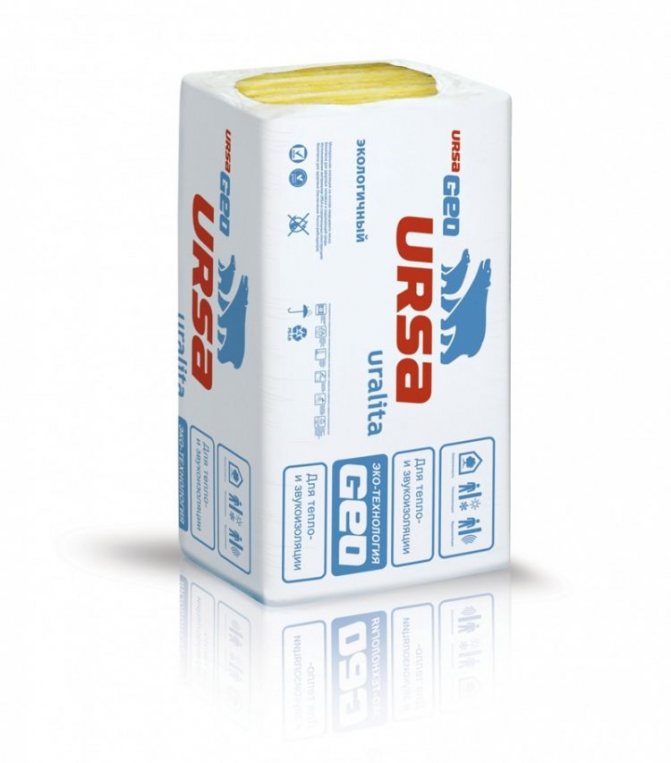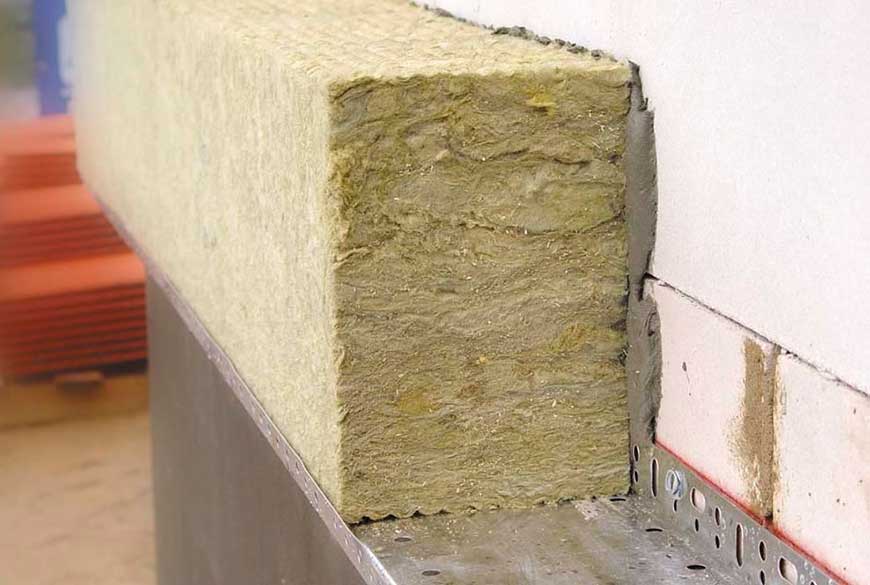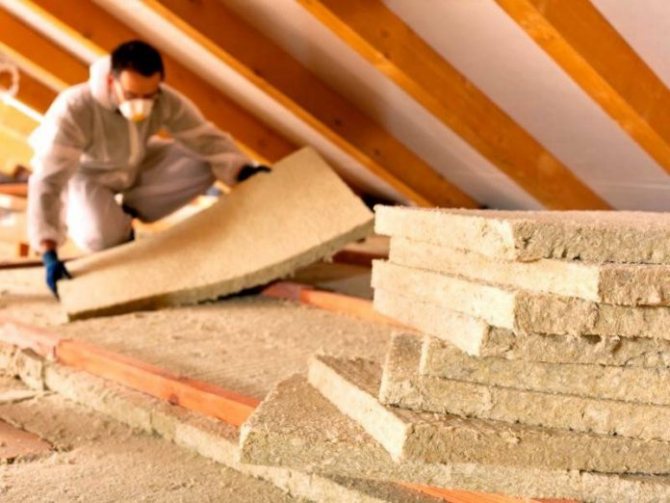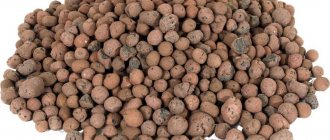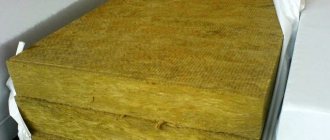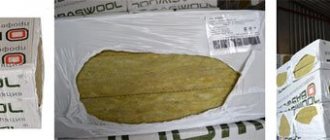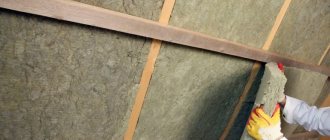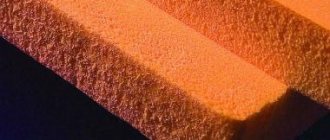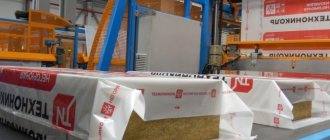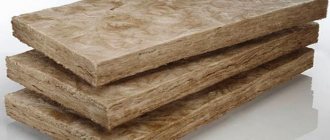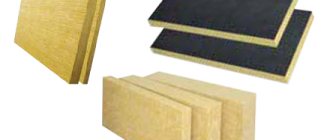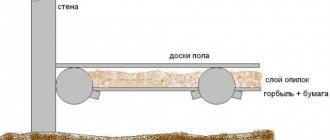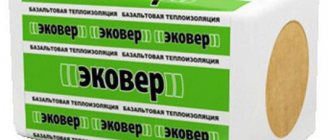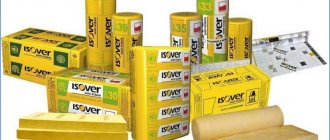Please rate the quality of the article Rating:
5.00 (2 ratings)
To keep the thermometer readings at the required level, regardless of the season, various heaters are called upon. And most people associated with construction prefer mineral wool.
Building your own home is one of the most troublesome and desirable goals of every person. The primary task in the design, together with the area, the location of the rooms, the height of the ceilings, is to ensure a comfortable temperature for a person. The microclimate at home should not depend on the environment.
Due to its properties, mineral wool can be used by builders not only as insulation, but also as a good means for sound insulation. Mineral wool insulation is widely used for thermal insulation of a bath (it is also used as protection against fire).
Helpful information:
- Insulation TechnoNIKOL: technical characteristics
- Metal tile Monterrey: technical characteristics
- Sewer pipes pvc: dimensions, properties and installation
- Polystyrene concrete - characteristics and scope
- Insulation Isover: types and technical characteristics
- Knauf insulation: technical characteristics
Mineral wool properties
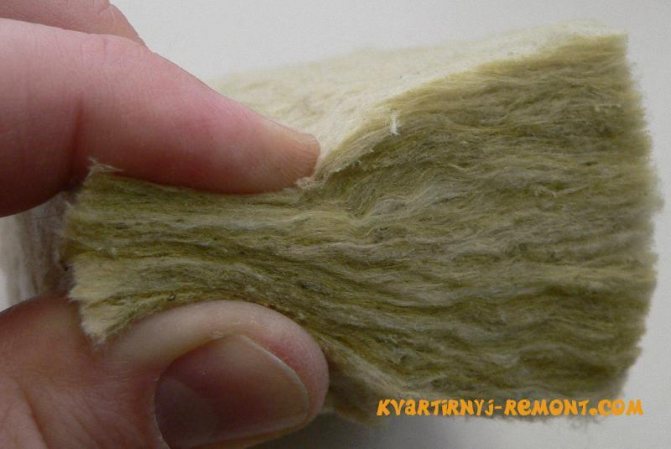
I want to see everything!
I want to see everything!
The main technical characteristics and properties of mineral wool include:
- Thermal conductivity. W / (m * K) is used as a unit for measuring the ability of cotton wool to retain heat. Information about the thermal insulation of mineral wool is almost always available on the packaging and is regulated by GOST (permissible value is 0.041-0.045).
- Soundproofing. This parameter "speaks" about the ability of cotton wool to damp sound waves. This indicator is indicated by the Latin characters Aw and is also indicated by the manufacturer on the packaging. It takes on a value of 0 and 1, depending on whether the mineral wool absorbs waves or reflects them.
- Density. The density of mineral wool is a quality characteristic of the wool. It depends on the number of fibers located per 1 m3 of material. This indicator fluctuates in the range from 20 to 220 kg / m3.
- Vapor tightness. Due to the ability of mineral wool to pass steam through its fibrous structure, the material on which the wool is laid (metal, brick, wood) retains its natural appearance for a long time.
- Low flammability. Mineral wool insulation can be used at a maximum temperature of 650 degrees. above zero. The maximum value indicated by the manufacturer on its products is A1.
- The absence of organic elements in the composition of cotton wool extends its service life.
An important quality of cotton wool is the ability not to emit smoke in the event of combustion, and the ability to maintain its structure - not to crack. On the packaging you can find the corresponding marks - S1 and d0.
Production of mineral wool
The manufacture of this type of thermal insulation material is partially regulated by the current GOST.
Basalt is used as a starting material for the creation of mineral wool due to its characteristics.
Depending on the purpose of the sealant, it may contain different amounts of this mineral. Creating basalt mineral wool, basalt is placed in a furnace with a suspended pressure, after heating it above the melting temperature, special fibers with binding components are added to it. They make the material more viscous and tighten it, as a result of which mineral wool is formed.
Types and composition of mineral wool
The basis of mineral wool includes portions of slag, glass, certain rocks. In this regard, it is also classified according to the material of manufacture: glass wool, stone and slag wool.


Glass wool is especially popular due to its cheap cost. It is obtained from molten glass, as well as from rocks containing silicate. It is yellow in appearance and has a well-visible fibrous structure. Unlike other types of mineral wool, its fibers are up to 3 mm long. Thanks to this feature, a better adhesion of the fibers is achieved, and hence the required density of the insulation.
Its advantages include low thermal conductivity and anti-vibration properties. Due to its elasticity, it is convenient to transport it - it can be compressed several times.
Glass wool insulation should be used where the load (including mechanical) on the surface to be insulated will be minimal. It will be in place in the case of external walls of buildings and pipelines.
When working with this type of insulation, it is worth considering the fact that it can cause harm to health. Therefore, it is not worth giving up means of protection. It is undesirable to touch glass wool with open skin areas.
Insulating the walls of the house with foam: debunking the myths.
Slag
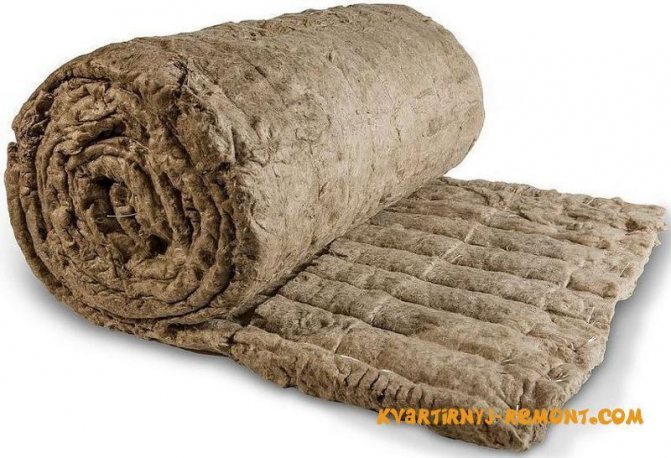

There is also mineral wool on the market for insulation, which is based on slag (waste from the processing of cast iron) of blast furnaces. Slag wool has a pronounced drawback - it absorbs moisture well. As a result, acids are released. It cannot boast of anti-vibration properties, as well as the necessary thermal conductivity, therefore there is no particular consumer demand for it.
The strength is small. This is due to the size of the particles from which it is made - they are smaller than that of glass wool.
It is used in enterprises, factories, in mines to insulate flat horizontal surfaces. A slight slope is allowed. To handle it, the use of personal protective equipment is mandatory.
This species was not recognized among the population due to the inconvenience of installation. People who prefer to do everything with their own hands have great difficulties when working with slag.
Stone wool
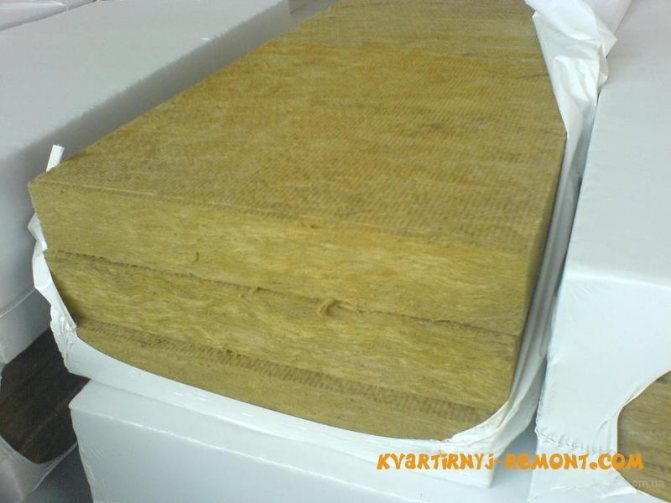

Another type of insulation is popular among the population - stone wool. It is also called basalt wool. It is made from gabbro-basalt rock. These include diabase, gabbro, and basalt. The composition also includes portions of limestone and dolomite.
Compared with slag and glass wool, this type of insulation surpasses them in many respects. The use of stone wool as a heater is more expedient - its thermal conductivity is much lower than that of the same glass wool.
Vibration and external load (including mechanical) are not an obstacle for it. The areas of application of stone wool are also different due to its resistance to fire. Moisture is not an obstacle for her either.
On the market, this type of insulation is presented in several options, depending on the strength and thickness.
Due to the ability to vary with the density of the insulation, building material from gabr-basalt rock is in great demand. Such material can be used to insulate cottages, summer cottages, baths.
Description of stone wool
Mineral stone wool... Humanity "learned" it from nature. In 1840, the English industrialist Edward Perry noticed that during volcanic eruptions, splashes of molten lava caught in the air into thin threads.
The businessman recreated the process in the workshops, assuming heat-saving properties stone wool. Characteristics coincided with expectations, but the production was dropped by Perry. The workers suffered.
The process of solidification of molten slag was carried out openly. Some of the fibers, as well as near the vents of volcanoes, flew into the air.The workers in the shops had to breathe in the frozen threads of the stone, and Perry paid for the treatment of the employees.
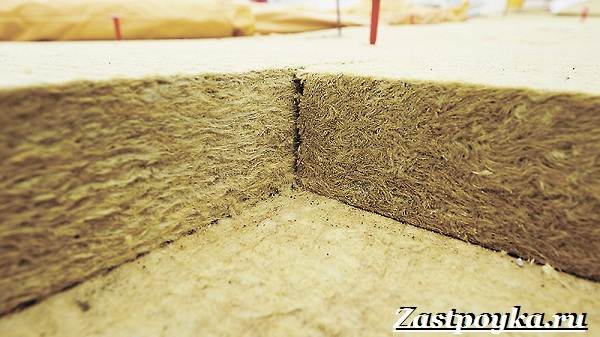

Produce insulation "Stone wool" already in closed smelters began in 1871 already in Germany. The release of the novelty was launched at the metallurgical plant in the city of Georgsmarienhütte.
Outwardly, stone wool looks more like sugar than ordinary wool. The threads in the material are equally thin and translucent. However, the directionality of the mineral fibers is chaotic.
This gives the material a density combined with airiness. Resins provide additional adhesion to the fibers. They serve as a bonding impregnation. The composition of the insulation is 100% natural.
The shape and thickness of the insulation
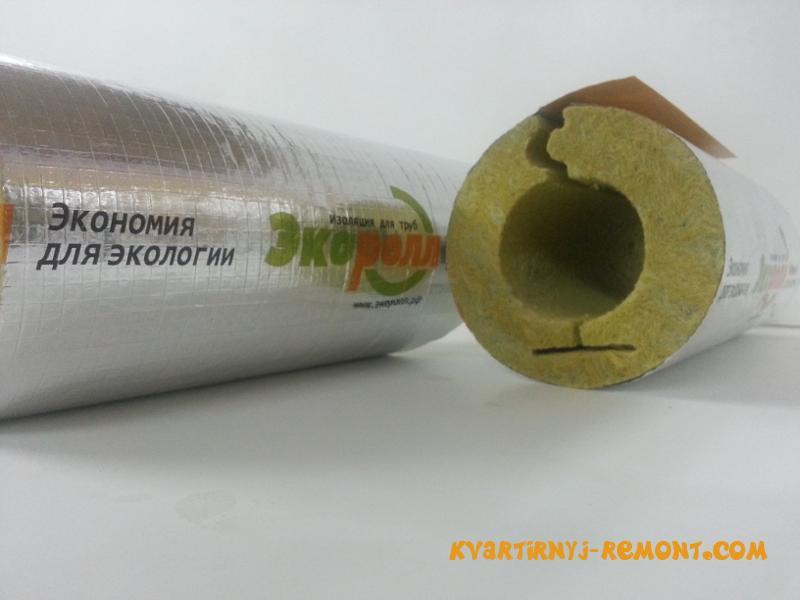

Mineral insulation is produced in the form of rolls, plates or cylinders. Basically, the shape of the material is determined by the scope of application.
- Rolls... Mineral wool in the form of a roll is used by builders where there is no significant load on the surface to be insulated. This includes walls, attics, floors between floors. This kind of cotton wool cannot boast of high density.
- Slabs... They are used on those objects where density comes first. It is advisable to apply mineral wool slabs to a concrete screed.
- Cylinders... Heat-insulating mineral wool cylinders are used to insulate pipe surfaces. The density of cylindrical mineral wool is average.
Plates, in comparison with cylinders and rolls, have a number of advantages: they do not cause hassle during transportation, are convenient for installation and work (they are easy to cut), they can be installed on uneven surfaces.
Rolls, plates and cylinders differ from each other not only in shape, but also in size. The dimensions of one slab are 60x100 cm, and the thickness can be different and varies from 5 to 20 cm.
The dimensions of the rolls differ significantly from the dimensions of the slab, since they are intended for insulation of large areas. Dimensions of one roll: length - 9 m, width 60-120 cm and thickness 50-150 cm.
The diameter of one cylinder can vary from 2-27 cm. The length of the insulation of this shape is 1 m, and the thickness is 2-10 cm.
Properties and characteristics of stone wool
Thermal insulation with stone wool attractive from the point of view of environmental friendliness and durability of the material. Resistance to high temperatures is also a plus. Basalt mineral fibers, for example, are kept under the "sight" of the flame for 3 hours.
True, bituminous binders evaporate already at 200 degrees. The material becomes looser. In case of further use, the insulation loses about 10% of its sound-insulating and heat-conducting properties, it can shrink.
The average vapor permeability of stone wool is 0.25 units. The indicator is measured in milligrams of water suspension passing through 1 square meter of insulation for an hour.
"Breathing" of stone wool eliminates the accumulation of condensation. This maintains a healthy indoor climate. therefore stone wool in the house - a welcome guest, like wood and stone in its usual form.


Stone wool can absorb water, but the maximum is limited to 3% for the area of the insulation. Mineral and glass threads do not absorb moisture at all. Basalt index is about 1.5%.
Like gypsum, stone fibers are able not only to absorb water, but also to give it away. The opposite process occurs when the surrounding atmosphere is dry.
Pros and cons
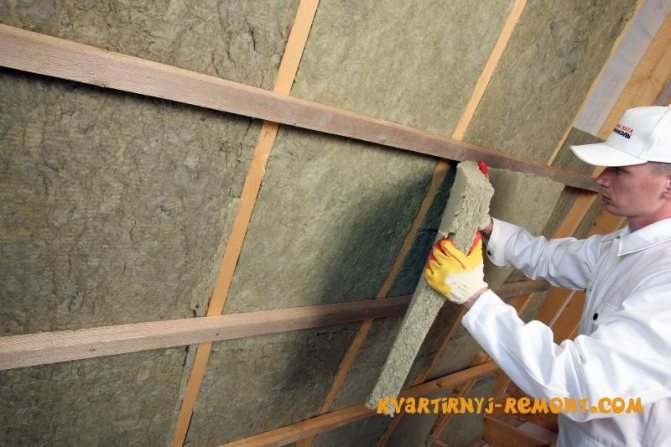

Due to its qualities, mineral wool withstands worthy competition in the insulation market. The advantages of this type of insulation include:
- Climatic conditions are not a hindrance for it, so installation can be carried out everywhere. No additional insulation is required.
- Using mineral wool, you can forget about such a concept as dampness.Mineral wool, as a heater, with proper processing, does not collect moisture, and also does not let steam in, so conditions for the formation of dampness are excluded.
- Such material does not interfere with the circulation of air in the room, but on the contrary, there is no need to use devices for air ventilation.
- Mineral insulation does not interact with acids and alkalis, therefore, you should not be afraid of breaking the strength of structures (laboratories are often sheathed with such material).
- Very good soundproofing. If you insulate an apartment or house with it, the sounds from the street will not bother you.
- As already noted, mineral wool does not lend itself to combustion, and also does not emit any harmful substances into the atmosphere when interacting with fire.
- Long service life of the material. Thermal insulation of buildings and pipelines with mineral wool is also beneficial from an economic point of view, due to the durability of the material. Such insulation not only burns badly or absorbs moisture, but also rodents and microorganisms do not spoil it. In addition, over time, it does not lose its shape, does not "shrink".
- Easy installation. Even an amateur builder is capable of insulating a room with mineral wool.
- Environmentally friendly material that does not cause any allergic reactions in people in the room.
Density of different types of bricks
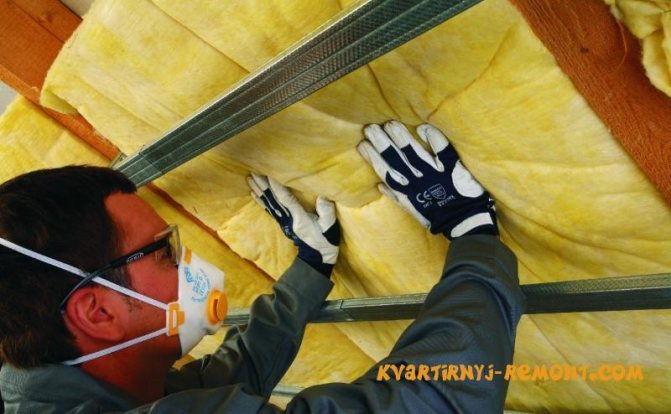

If before the shortcomings could be given a whole list, today many manufacturers have eliminated most of them in their products. But some of the problems still remain:
- Dust harmful to health - this concerns glass wool, the work with which must be carried out in overalls and with the help of protective equipment. A damaged part of the mineral wool can be easily injured. Moreover, damaged fibers of the material can negatively affect the respiratory tract. It is quite simple to avoid this - it is enough to put on a protective suit, goggles, respirator and gloves when installing mineral wool.
- When heated, such material can release a dangerous toxin - phenol (arises from the oxidation of formaldehyde resin, which is part of the cotton wool). Some manufacturers claim that their amount of formaldehyde resins is so small that they cannot harm the human body. In any case, it is not worth the risk, and the installation must be carried out taking precautions.
- There is a problem of deterioration of heat-conducting properties as a result of the interaction of the insulation with water. Manufacturers are working to solve this problem by adding special hydrophobic compounds to their products. Additionally, during installation, it is necessary to apply waterproofing.
Distinctive characteristics
Mineral wool is a deduced insulation, so that with its help it was possible to erect heat-insulating structures.
Recently, due to the fact that it has amazing characteristics, it has begun to be widely used in the construction of both residential buildings and the construction of commercial facilities. Moreover, both slabs of various sizes and its rolls are used equally.
Most often, with the help of mineral wool, walls and roofs of residential premises are insulated. The reason for this is the low thermal conductivity that stone wool has.
The purpose and technical characteristics of Rocklight mineral wool insulation are studied in detail in this material:
Insulation errors
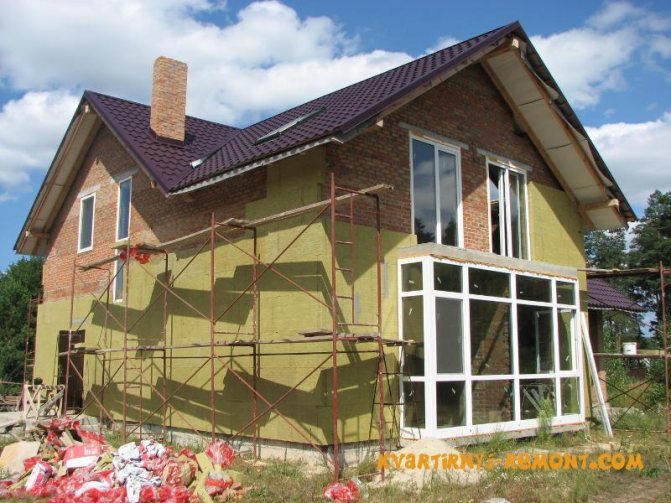

Often the reason for negative reviews about mineral wool as a heater on the part of builders is installation errors:
- Insufficient amount of insulation. The optimal thickness in most cases is 10 cm.
- If the insulation was done from the inside (wall insulation in the apartment), then you should not dwell on this. When choosing between indoor and outdoor work, the latter should be preferred.
- You can not save on fasteners, and also use unsuitable fasteners where they are inappropriate. It is important to remember that amateur performance is not always justified and can go sideways.
- If the house has a basement, then it is imperative to pay attention to it, otherwise the proper effect of insulation will not work.
- Accuracy in work is essential. It is worth laying the layer as evenly and tightly as possible.
- It is important to pay special attention to the preparation of the base. Do not ignore cleaning the surface from debris and sanding it, in case of unevenness. In the worst case, the insulation will simply fall off the wall.
- It is necessary to avoid getting glue into the joints of the boards. In this case, it is here that the cold will come inside.
- Insulation work must be carried out in warm, dry weather. It must be remembered - no moisture.
- When attaching the mesh, one important rule should be taken into account - we use only glue, we hold the putty for other work.
- It is necessary to insulate at least 60% of the surface in order to achieve the desired result.
Do-it-yourself plastic window adjustment
Insulation specifics
This type of insulation can withstand temperatures up to 300 degrees, which allows it to be used for various purposes, depending on the brand.
The slab itself is quite rigid, since it is made of basalt, and its thickness directly depends on the percentage of rock content in the material.
Mineral wool insulation should be used only for the purpose indicated by the manufacturer, because, for example, if rockwool mineral wool is intended for roof insulation, and you insulate the walls with it, the effect may not be felt.
What we pay attention to when buying insulation
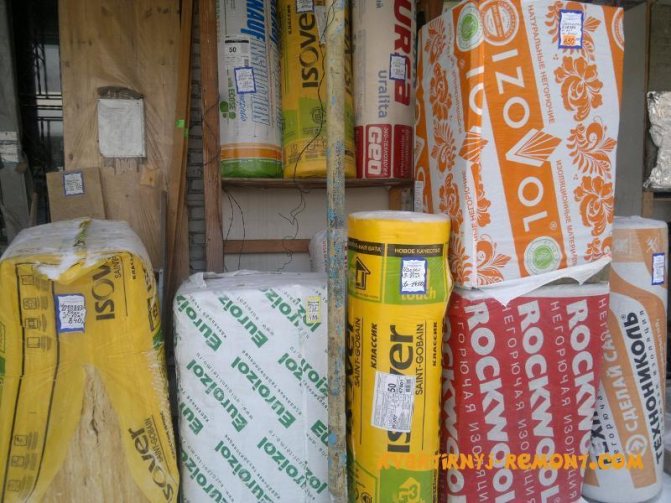

It will be useful to know what to look for when choosing and buying insulation.
- An important condition for any purchased product is that it must comply with the State Standard.
- In addition to information from sellers, you should make sure of the purpose of this or that insulation yourself. Most manufacturers have taken care of this - the packaging contains enough information (including the value of the thermal conductivity of the material).
- Preference should be given to foil-coated mineral wool. This combination will help avoid heat loss.
- It is important to determine the maximum load that will be applied to the coating with insulation (what density mineral wool will be more appropriate to use).
- When choosing products, it is necessary to pay attention to the fibers on the insulation, their location - if it is chaotic, then the mineral wool is strong and capable of experiencing heavy loads.
- Insulation with its main function will cope without problems.
- In no case should you buy cotton wool that has gotten wet for some reason. After it dries, all of its inherent properties will be minimized at best.
- Cotton wool must be supplied and stored in its original packaging.
- The manufacturer is allowed to use different types of insulation together. In this case, the condition of equal density must be taken into account. The exception is when cotton wool is used as a sound insulator.
The date of manufacture does not matter when purchasing mineral wool, since such material has no expiration date.
If the question of cost is not worth it, then you should give preference to basalt (stone) wool. Besides higher heat absorption and low noise insulation, slag wool or glass wool can be easily damaged during installation.
Advantages and disadvantages of mineral wool
The benefits include:
- Low thermal conductivity, which makes it an excellent insulation
- Fire safety
- Resistant to temperature extremes. Material does not deform when heated / cooled
- Chemical and biological resistance
- Excellent vapor permeability, thanks to which the material "breathes"
- Ease of installation
Disadvantages:
- Requires a water repellent treatment to reduce moisture absorption.When moisture is absorbed, the heat-insulating properties decrease, cold bridges are formed
- Large mass compared to foam, which increases the cost of shipping material


The choice of material for sound insulation and insulation
For installation on different types of surfaces, a heater is selected, depending on the required characteristics and density. The difference in insulation for walls, roofs, floors is not only in rigidity, but also in price.
Roofing mineral wool: application features
Several types of basalt insulation are used in roof insulation systems:
- Plates - when arranging finished roofs, for laying in rafter niches.
- Roll - for installation of a roofing sandwich under a rigid sheathing.
- With a heat-reflecting layer to protect against heat loss in the attic.
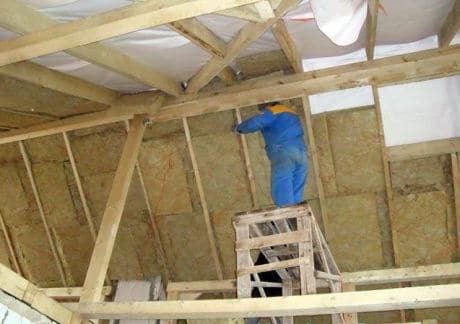

Roofing material
The density of the roof insulation should not be maximum. There is no load on the surface of the material. Therefore, they are more guided by the indicators of vapor permeability and moisture resistance: warm moist air should not remain inside the insulation. The thermal conductivity of cotton wool decreases with increasing humidity.
For the arrangement of roofing "pies" are used multilayer systems made of vapor-permeable films, mineral wool for the roof, a waterproofing layer that protects the insulation from moisture from outside.
Plates for insulation of attics are laid directly above the waterproofing film between the rafters. Fastened with a crate.
Insulation for walls: how to choose the right material for exterior and interior work
For outdoor work, rigid plates are used. The density of insulation for external walls should be maximized. A decorative cladding is placed on top of the insulation layer or a light or heavy plaster layer is applied.
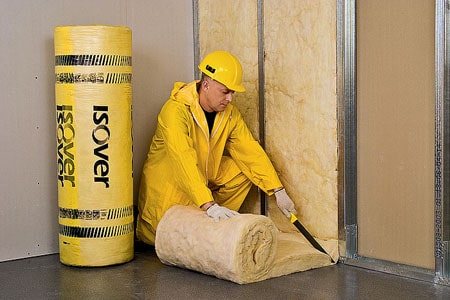

Wall insulation
For outdoor use, choose a vapor-permeable material with a minimum moisture absorption rate. For interior work, not only slabs are used, but also mats. It is advisable to lay mats (roll materials) when creating multilayer wall structures with a rigid facing layer.
The parameters of mineral wool for walls are also selected taking into account the material from which the insulated surface is made. Too dense material is not suitable for protecting wooden walls - such a surface must "breathe".
The thinner the wall and the higher its thermal conductivity, the thicker the insulation layer should be.
Which wool is better - mineral or stone wool
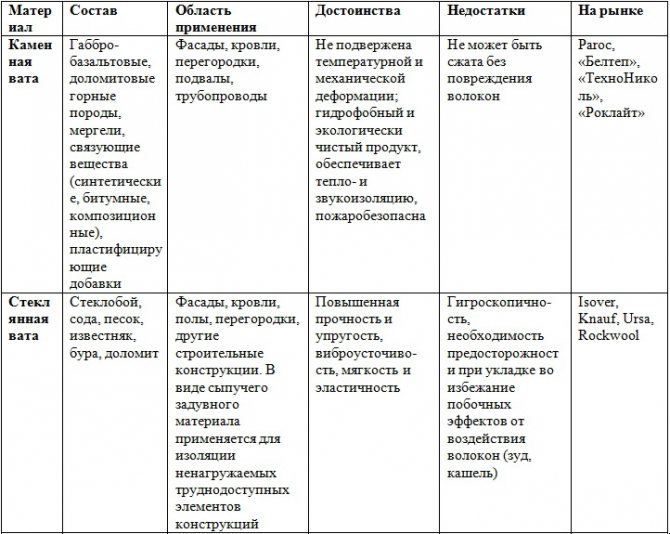

Table of comparative characteristics of glass wool and stone wool
If we compare the varieties of mineral wool - glass wool or slag wool with basalt insulation, we can conclude by the following parameters:
- Basalt wool retains heat better.
- Glass wool is much more environmentally friendly, because it contains no carcinogenic substances that are used to combine basalt fibers. Glass wool contains glass and quartz.
- Slag wool is not used as insulation for residential premises. For this, glass wool and basalt insulation are more suitable.
- The density of basalt wool is higher, does not get wet, does not change shape. Glass wool is softer, but it is susceptible to moisture and shrinks. It is better to use glass wool in dry rooms or to insulate ground communications with it.
- Basalt does not require additional materials. For glass wool, a film is needed to cover it on top and protect it from moisture.
- During the operation of basalt wool, harmful dust is formed, since the fibers tend to break. Glass wool does not generate dust, as its fibers are long and soft.
If you carry out internal work, it is preferable to use glass wool - it does not emit harmful substances into the space, since the binder is acrylic resin - it is absolutely safe for health.For external work, basalt insulation is more suitable, since its moisture-repellent properties are much higher and the material does not react to temperature changes, continuing to perform its functions.
Material characteristics and properties
The main question facing the home owner is how to choose the right mineral wool? On the market there is a variety of materials from different raw materials, with cardinal differences in performance, technical properties and applications.
Types of mineral wool: which wool is better
Under the general name "mineral wool", 3 types of mineral wool are produced from different types of raw materials:
- Glass wool.
- Slagged.
- Stone (basalt) wool.
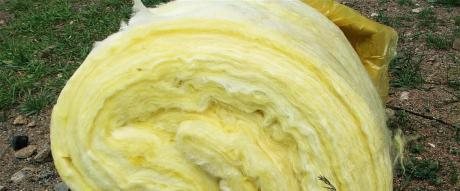

Glass wool: yellow material in rolls
Fiberglass material is practically not used in residential premises. The main problem is fiber fragility. Small particles of glass cause irritation, falling on open areas of the skin, can provoke inflammation of the mucous membranes and lungs. Mostly inexpensive glass wool is used as a heater for technical rooms and pipelines.
Cotton wool with a fiberglass base has a high hygroscopicity, and the lowest density among all types of mineral wool. Mineral glass wool is not moisture resistant. Available in rolls. Also, the material does not have a sufficient level of heat resistance, when heated to 300 degrees, the fibers begin to melt, and the canvas loses its insulating properties.
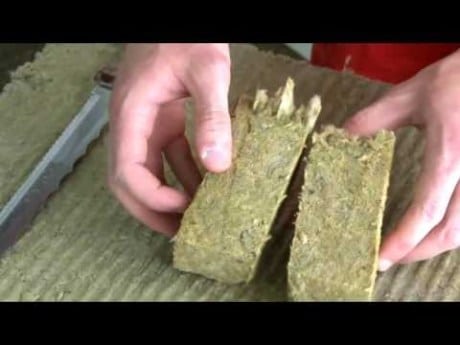

Stone wool: cut
Mineral stone wool is a canvas with the lowest thermal conductivity, practically not absorbing moisture, but perfectly transmitting steam, due to its cellular structure. The composition contains a minimum of binders. In addition to high heat resistance, cotton wool is produced in the form of canvases with varying degrees of rigidity, which makes it possible to use it as a heater and sound absorber on different surfaces.
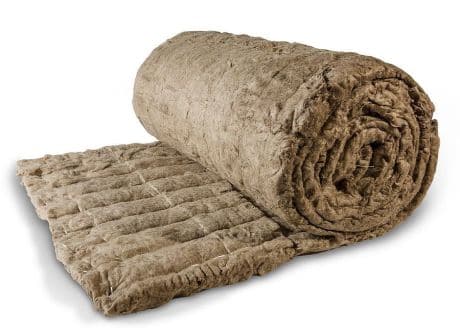

Blade material: cheap insulation
The cheapest insulation is slag wool. The fibers produced from the dump of blast furnaces are neither dense enough nor heat-resistant. The material is sintered when overheated. Not suitable for installation in areas adjacent to heat sources. It is practically not used in household construction.
The answer to the question: which is better, glass wool, slag or basalt wool is unambiguous. The most reliable and safe, environmentally friendly material is stone mineral wool.
The main characteristics of the insulation
The characteristics of mineral wool, which must be studied before buying a material, are thermal conductivity, density and vapor permeability, heat resistance.
- The vapor permeability of the canvas is the ability of the material to conduct condensate and vapor through its own internal structure, without accumulating it inside. The value of the indicator is especially important to take into account when choosing a product for insulating breathable surfaces, for example, walls made of natural wood. The best indicator is for a material based on basalt rocks (stone wool). Steam conductivity is up to 0.35 mg / m2. x h x Pa.


Water vapor permeability of insulated surfaces
- The density of mineral wool is measured in kilograms per cubic meter (kg per m3). Stone wool is produced with a density index from 20 to 220 kg / m3. Based on the value, the stiffness of the material is also determined. Slabs with a high index from 200 kg / cubic meter are able to withstand a load of approximately 700 kg per square meter of area. The lower the indicator, the softer and more ductile the material. Low-density cotton wool can be easily installed on surfaces of complex geometric shapes with irregularities.
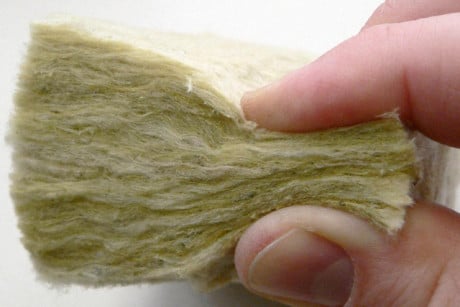

The lower the density, the softer the material and the better the flexibility
- The main criterion by which the insulating capacity of the canvases is determined is thermal conductivity. This is the amount of heat that is conducted by the unit of density of a material in watts at a standard temperature difference. According to the norms, an indicator of up to 0.45 W / mx K is considered sufficient.Modern basalt heaters meet European standards with a thermal conductivity level of 0.03 - 0.04 0.45 W / mx K.
The flammability index is another argument in favor of choosing mineral wool. The material is considered absolutely non-combustible, in addition, when exposed to temperature, it does not emit corrosive substances and smoke during combustion. Basalt wool can withstand heating without loss of performance up to 700 ° C. The combustion temperature of the cotton wool exceeds 1000 ° C.
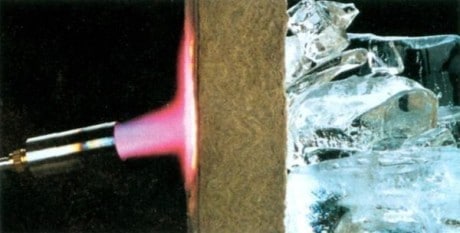

Cotton wool does not burn or melt
Areas of application of the material
The properties and characteristics of stone-based mineral wool allow the use of insulation without restrictions. In private construction, the material is used to insulate the external and internal surfaces of walls, in the insulating layer of a roofing sandwich, thermal insulation of floors.
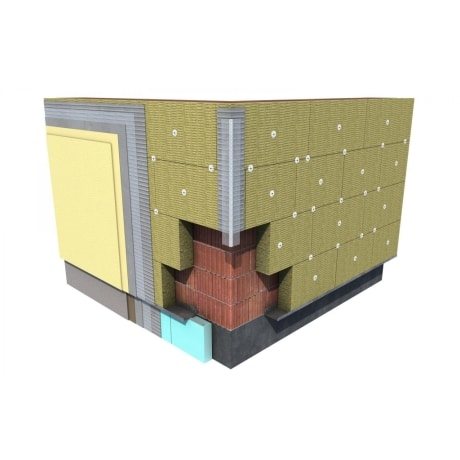

Application of basalt wool slabs
Other areas of application:
- The sound absorption properties of semi-rigid rolled products make it possible to use mineral wool for soundproofing rooms.
- Insulation of structures with an increased risk of fire: wooden houses, rooms where boilers, stoves, fireplaces are installed and direct insulation of chimneys and the perimeter of heat sources.
- Protection of pipelines, underground utilities.
Forms of issue
Basalt wool is produced in the form of rigid slabs, semi-rigid mats, in rolls. For professional use, a granular material is produced for application to a heat-insulated surface by spraying.
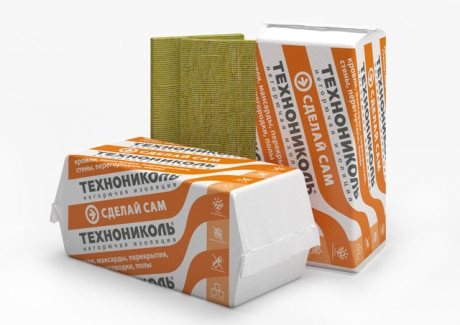

Plates in factory packaging
The highest density of insulation is that of wool in slabs. Standard sheet sizes are 50 x 100 cm. The material is easily cut and cut with a hacksaw. The thickness of the sheet can be from 5 to 20 cm. The plates are packed in standard blocks indicating the number of sheets or the square of the surface to be coated in one package. The slabs are considered wall slabs and are suitable for installation outside the house, due to their high strength and thermal insulation properties.
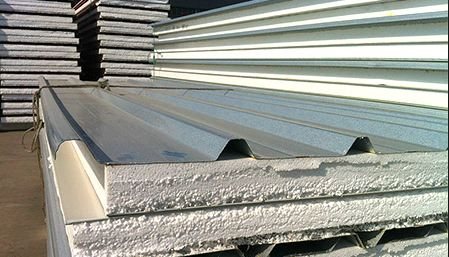

Flexible mats in sandwich construction
The material, which is produced in the form of rolled mats, has a lower density. The mats are suitable for laying in multilayer wall structures indoors, used as sound insulation wool for installation under a final floor covering, on interior partitions.
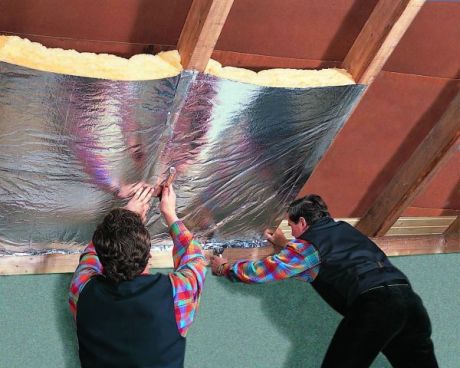

Foil surface
In addition to single-layer canvases, manufacturers offer sheets with several types of coatings. A vapor barrier and waterproofing film is glued on top of the fiber layer in order to protect the material from getting wet and improve vapor permeability. To improve the thermal insulation properties, the panels are covered with a layer of reflective foil, which reflects heat radiation into the room.
Manufacturers: who to entrust home insulation
Traditionally, European manufacturers are considered the leaders in the production of mineral wool (or stone) wool. The release is made in accordance with the internal standards of the countries where the production is located, and the requirements of European standards are much stricter than domestic ones. Naturally, imported products are more expensive.
An alternative to imported heaters is domestic counterparts, which are produced on new equipment, according to standards that are not inferior to European ones.
Characteristics of basalt insulation materials from market leaders:
Application area
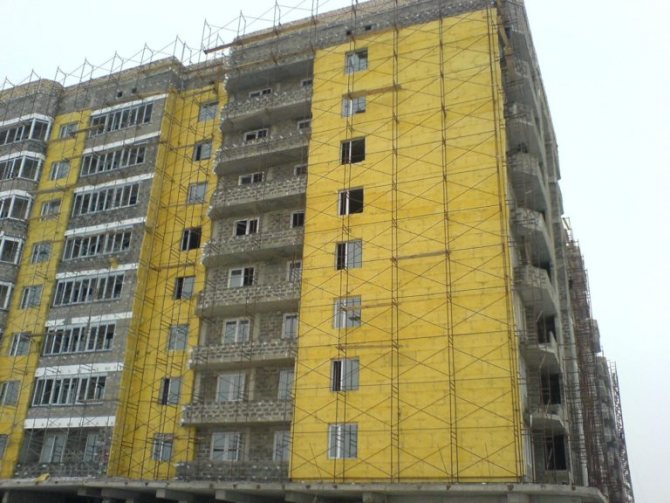

The facades of high-rise buildings are often insulated with basalt wool
Stone mineral wool has been used for a long time - since the middle of the 20th century, therefore it has established itself as a reliable building material. It is used by:
- For insulation of external walls. This allows you to build buildings with less consumption of building materials. A 10 cm layer of cotton wool replaces 2 meters of brickwork, which allows you to significantly save on building houses.
- For strapping pipes made of various materials.The metal does not corrode in contact with chemically neutral wool, therefore it lasts longer.
- For insulating the interior walls of the house, as well as increasing the sound insulation properties. With single-layer brickwork, you can also increase the interior space by covering the walls with a thin mineral wool slab.
- The material is placed under a concrete screed in the floor. This reduces sounds and also controls heat consumption.
- Roof insulation to exclude heat loss in the winter season, as well as additional cooling of the room.
- In the attic, wooden parts are upholstered with mineral wool to protect them from accidental fire.
- The pipes in the apartment can be insulated with rolled cotton wool to avoid the formation of condensation due to the flow of cold water.
Rock wool is believed to deter mice and other rodents. According to recent reports, this is not the case. Animals do well in natural material and do inside the nest, so it is recommended to use additional anti-rodent products.
Options for wall insulation outside
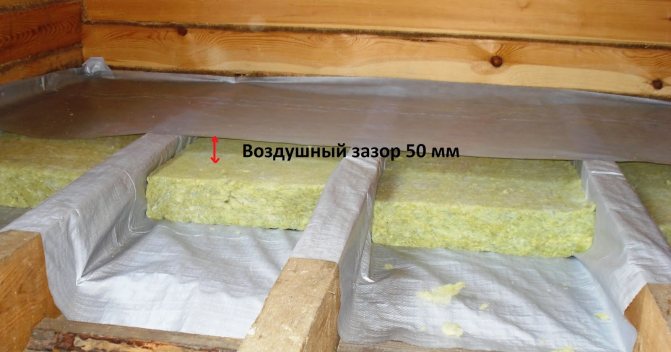

Floor insulation with stone wool
For the facade, large-area slabs are used, at least 100 mm thick. Suitable roll, not covered with foil. Fastened with dowels or special glue for mineral boards. Better to use both options at the same time. An important indicator for the facade is the density of the mineral wool. It should be at least 45 kg / cubic meter. Cotton wool with a density of more than 100 kg / cubic meter is used for decorative plaster.
From the inside, the walls are insulated with mineral wool with a density of less than 45 kg / cubic meter.
Warming of floors
For floor insulation, slabs with a density of 30 to 45 kg / m are used. They put it in cells of wooden blocks before pouring concrete. A film is placed under the wool layer for additional protection against moisture.

